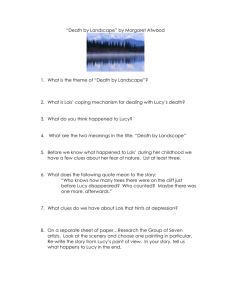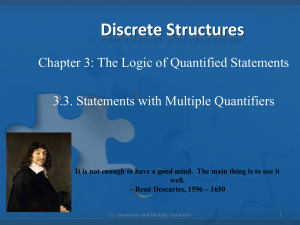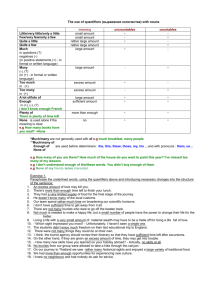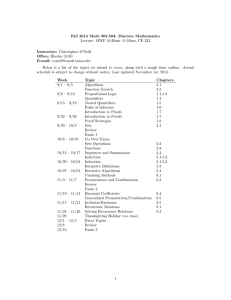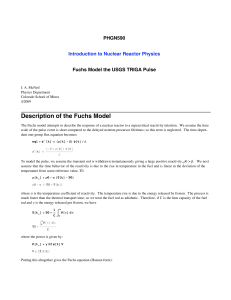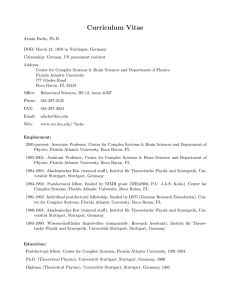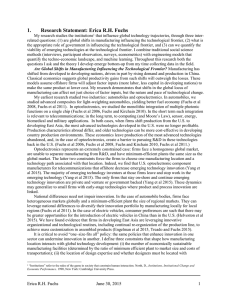Example: Representing Facts in FOL
advertisement
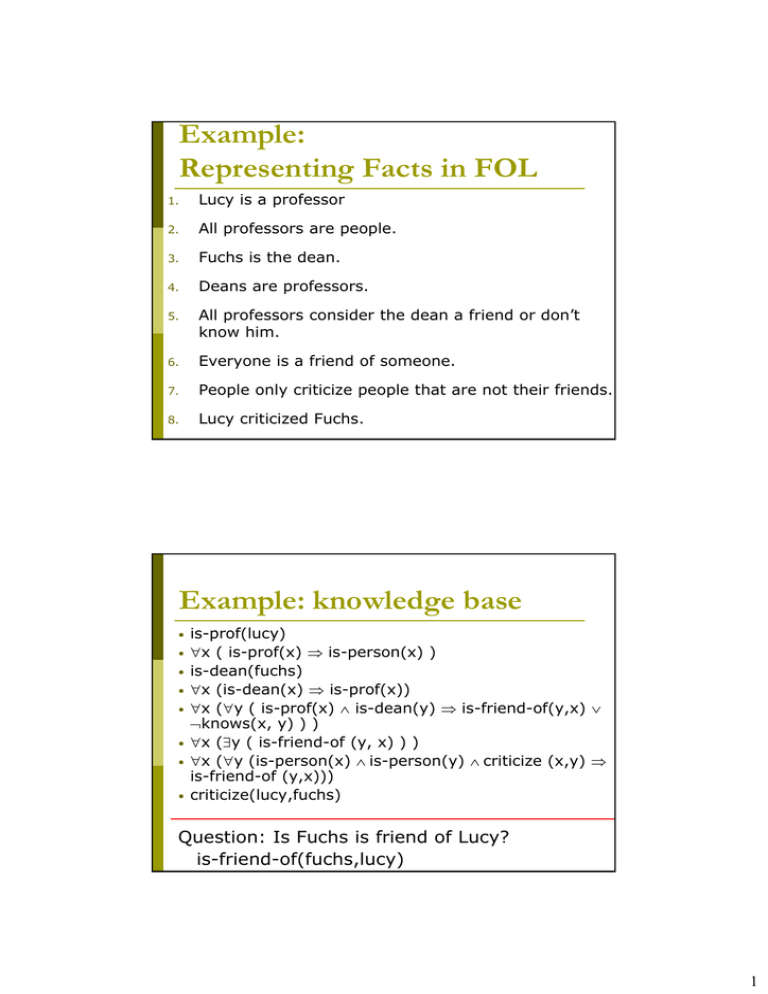
Example: Representing Facts in FOL 1. Lucy is a professor 2. All professors are people. 3. Fuchs is the dean. 4. Deans are professors. 5. All professors consider the dean a friend or don’t know him. 6. Everyone is a friend of someone. 7. People only criticize people that are not their friends. 8. Lucy criticized Fuchs. Example: knowledge base • • • • • • • • is-prof(lucy) x ( is-prof(x) is-person(x) ) is-dean(fuchs) x (is-dean(x) is-prof(x)) x (y ( is-prof(x) is-dean(y) is-friend-of(y,x) knows(x, y) ) ) x (y ( is-friend-of (y, x) ) ) x (y (is-person(x) is-person(y) criticize (x,y) is-friend-of (y,x))) criticize(lucy,fuchs) Question: Is Fuchs is friend of Lucy? is-friend-of(fuchs,lucy) 1 Resolution Rule of Inference General Rule: Note: Eij can be negated. Example: Resolution Example: FOL Example: Prove bird(tweety) Axioms: Regular CNF 1: NB 2: 3: Add negation 4: Resolution Proof 1. Resolve 3 and 1, specializing (i.e. “unifying”) tweety for x. Add :feathers(tweety) 2. Resolve 4 and 2. Add NIL: conclude bird(tweety) 2 Resolution Theorem Proving Properties of Resolution Theorem Proving: sound (for propositional and FOL) (refutation) complete (for propositional and FOL) Procedure may seem heavy but note that can be easily automated. Just “smash” clauses until empty clause or no more new clauses. Converting More Complicated Sentences to CNF 3 Algorithm: Putting Axioms into Clause Form 1. Eliminate the implications. 2. Move the negations to the atomic formulas. 3. Eliminate the existential quantifiers. 4. Rename the variables, if necessary. 5. Move the universal quantifiers to the left. 6. Move the disjunctions down to the literals. 7. Eliminate the conjunctions. 8. Rename the variables, if necessary. 9. Eliminate the universal quantifiers. 1. Eliminate Implications Substitute (E1 E2) for (E1 → E2) 4 2. Move negations down to the atomic formulas Equivalence Transformations: Result: 3. Eliminate Existential Quantifiers: Skolemization Harder cases: There is one argument for each universally quantified variable whose scope contains the Skolem function. Easy case: 5 4. Rename variables as necessary We want no two variables of the same name. 5. Move the universal quantifiers to the left This works because each quantifier uses a unique variable name. 6 6. Move disjunctions down to the literals 7. Eliminate the conjunctions 7 8. Rename all variables, as necessary, so no two have the same name 9. Eliminate the universal quantifiers 8



